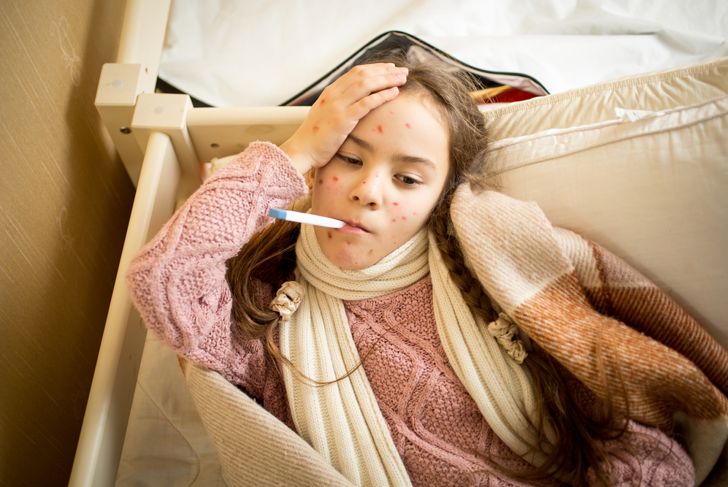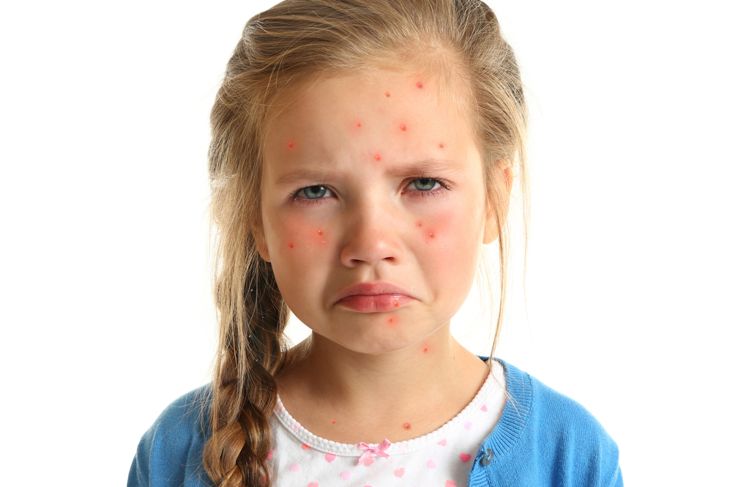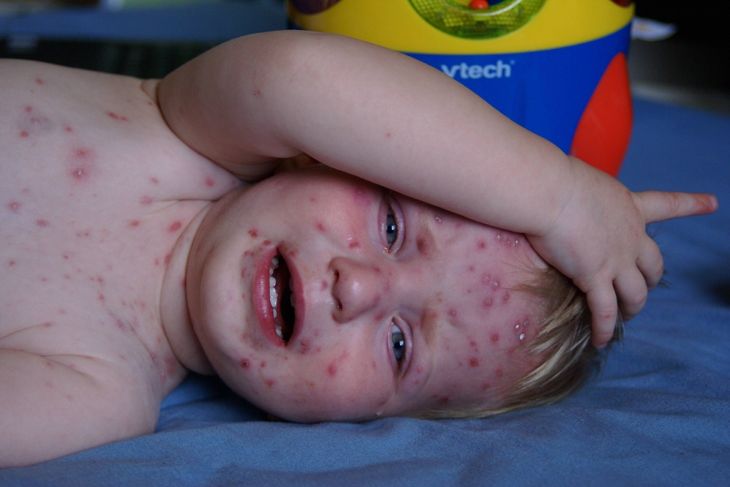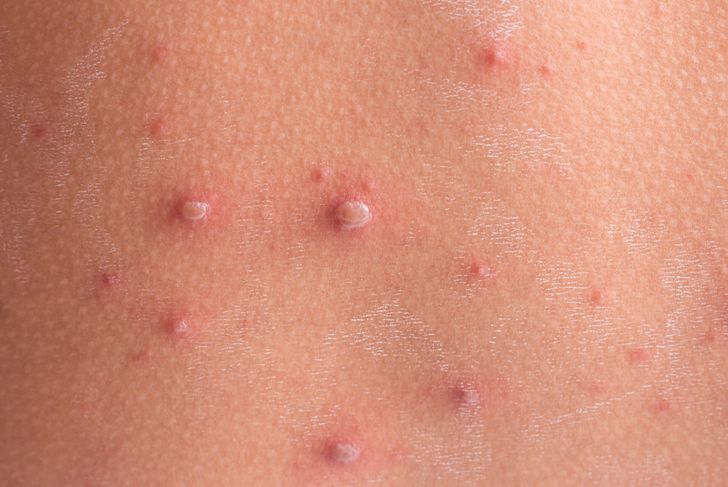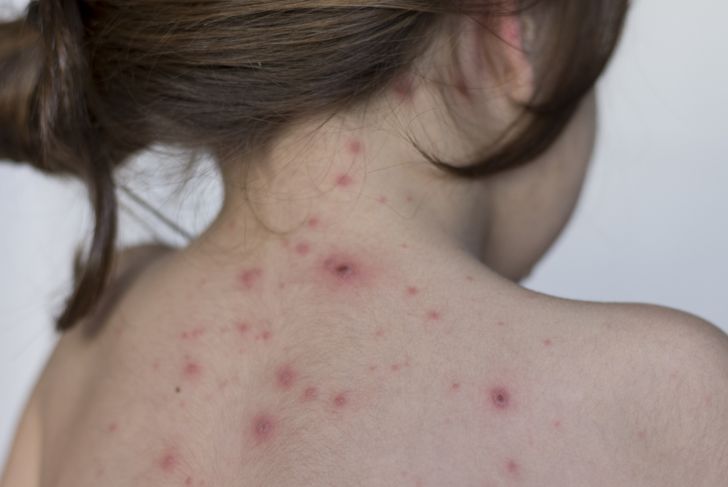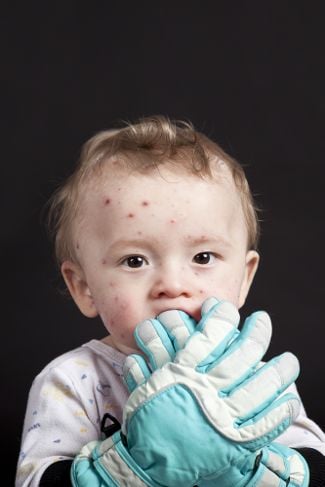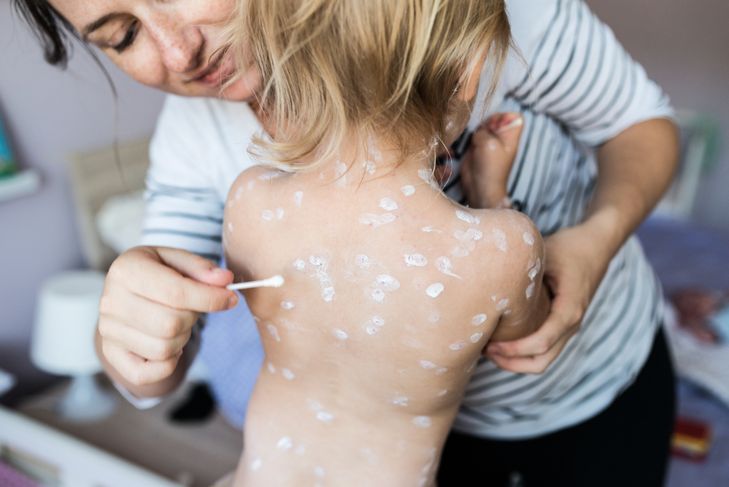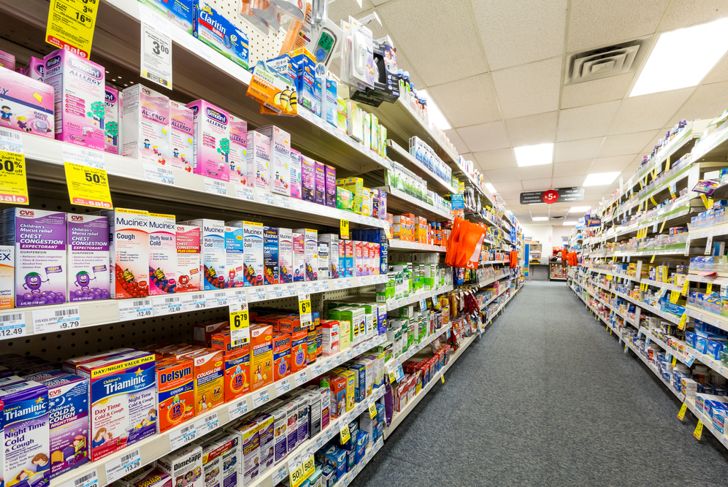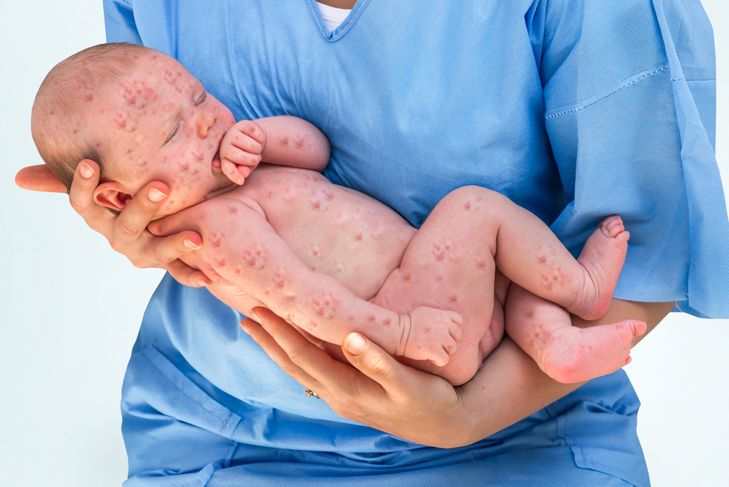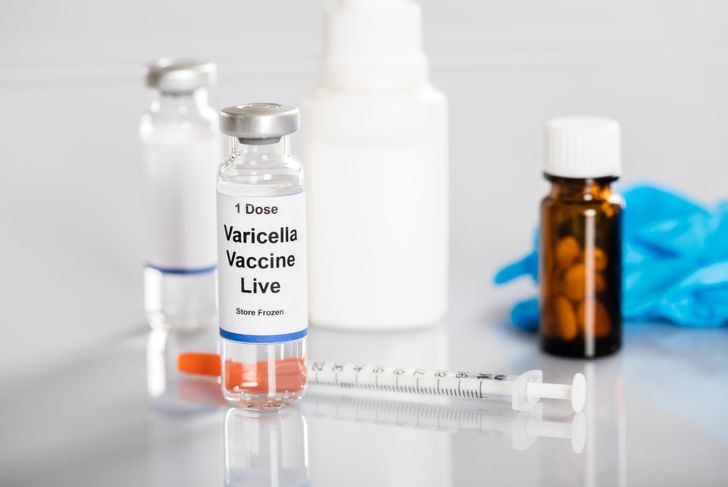Chickenpox is a viral infection that is highly contagious. It may also be referred to as varicella because it is caused by a virus known as herpes varicella-zoster. Chickenpox can be spread several ways including skin-to-skin contact, saliva, and airborne respiratory droplets from sneezing or coughing. You can also become infected after touching a contaminated surface like a doorknob. Before a vaccine was created to prevent this uncomfortable infection, most people experienced chickenpox as a child. If you already had chickenpox, you have built up immunity from getting it again in life; nevertheless, the virus still remains in your body. Even though herpes varicella-zoster can stay dormant for decades, it might reactivate and cause shingles later in life. The obvious rash from chickenpox can appear anywhere from one to three weeks after exposure. However, the symptoms last only five to ten days. Sometimes complications can make chickenpox more serious, but it is generally a mild condition that has obvious symptoms and easy treatments.
Fever
Although this is not the most noticeable symptom of chickenpox, it is one of the first. A fever is a common sign of sickness. It is your body’s way of trying to fight off an infection. The body’s internal temperature should be 98.6 degrees Fahrenheit (37 degrees Celsius), so anything above that is considered above normal. However, a fever really is not considered serious until it reaches 100.4 degrees Fahrenheit (38 degrees Celsius). You can expect the rash to appear about one to two days after the fever strikes.
Malaise
Another symptom that will appear a day or two before the more itchy bumps is the general feeling of being unwell or malaise. Fatigue is often associated with malaise and, thus, the chickenpox as well. Not only tiredness but the loss of appetite and a headache are typical symptoms of this viral infection. If you came in contact with chickenpox recently and you are not vaccinated, this feeling may be caused by herpes varicella-zoster.
Red, Itchy Bumps
Also known as papules, these raised, pinkish bumps are very itchy. This is the first stage of the chickenpox rash. The bumps can break out anywhere on the body including the limbs, torso, neck, and face. In a severe case, the bumps can spread to sensitive areas such as the throat and eyes or the anus and genitals. New, itchy bumps will continue to appear for several days. Be careful not to scratch the burning, itchy sensation as it will only spread the infection.
Blisters
The second stage involves the bumps turning into blisters. If you have bumps covering your entire body including uncomfortable areas then you will also get blisters in these same exact spots. Also known as vesicles, the fluid-filled blisters form over the bumps within a week or so, give or take a couple of days. It only takes about a day, though, for the blisters to break open and drain.
Scabs
The final stage of the rash includes scabs. After the blisters leak, the bump-turned-blister will crust over into a scabbed lesion. This can happen as early as the second day of the rash, which means you might experience all three stages of bumps, blisters, and scabs at once on different areas of the body. Chickenpox is contagious for up to 48 hours before the first sight of a bump and remains so well after the rash first breaks out. It can take up to two weeks for the rash to heal completely.
Treatment: Wear Gloves to Avoid Scratching
This might be easier said than done if you have the chickenpox. However, it makes all the difference. Not only does scratching help spread the infection, but it slows down the healing process. It also increases the risk of a more serious infection in the sores. Scratching chickenpox will also lead to scarring even after the rash is healed. You should trim the fingernails below the fingertips in order to avoid scratching. For unbearable situations, wear gloves over the hands, especially at night.
Treatment: Relieve the Itch with Oatmeal
You must wait out the rash, but in the meantime, you should try to relieve the itchy, uncomfortable symptoms of chickenpox as much as possible. For example, you can soak your skin in a cool bath with uncooked oatmeal. Colloidal oatmeal, which comes already finely-ground for soaking, or baking soda can also help. Particular soothing creams like calamine lotion might also relieve the symptoms; you can dab a little bit on the bumps (and put your gloves back on!).
Treatment: Over-the-Counter Medication
Soothing the itching of chickenpox with antihistamines is acceptable. Diphenhydramine like Benadryl can help, but make sure you check with the doctor before giving it to a child. If a mild fever is associated with the chickenpox, ibuprofen such as Advil or Motrin can relieve the symptoms. Acetaminophen like Tylenol might also provide temporary relief. Once again, depending on the age, consult with a doctor about dosage. Aspirin should not be given to anyone with the chickenpox because it can lead to Reye’s syndrome.
Treatment: Visit the Doctor
Although no medical treatment is necessarily required as treatment for the chickenpox, you still might want to take your child to the pediatrician. That way, the doctor can properly diagnose the condition and offer you advice about both at-home remedies and other forms of treatment. You can also be sure of the different over-the-counter medications that are acceptable as well as the dosage associated with each.
Treatment: Antiviral Drugs and Vaccination
Otherwise healthy children do not have high-risk complications associated with chickenpox. However, there are a few cases in which antiviral drug prescriptions will help speed the healing of the rash. For example, if a second skin rash formed or pneumonia developed, further treatment may be necessary. Acyclovir (Zovirax), valacyclovir (Valtrex), and famciclovir (Famvir) are all types of antiviral drugs that can lessen the severity of the rash. Pregnant women will also have to seek medical treatment if they become infected with chickenpox. Also, talk to your doctor about getting yourself and your children vaccinated.

 Home
Home Health
Health Diet & Nutrition
Diet & Nutrition Living Well
Living Well More
More